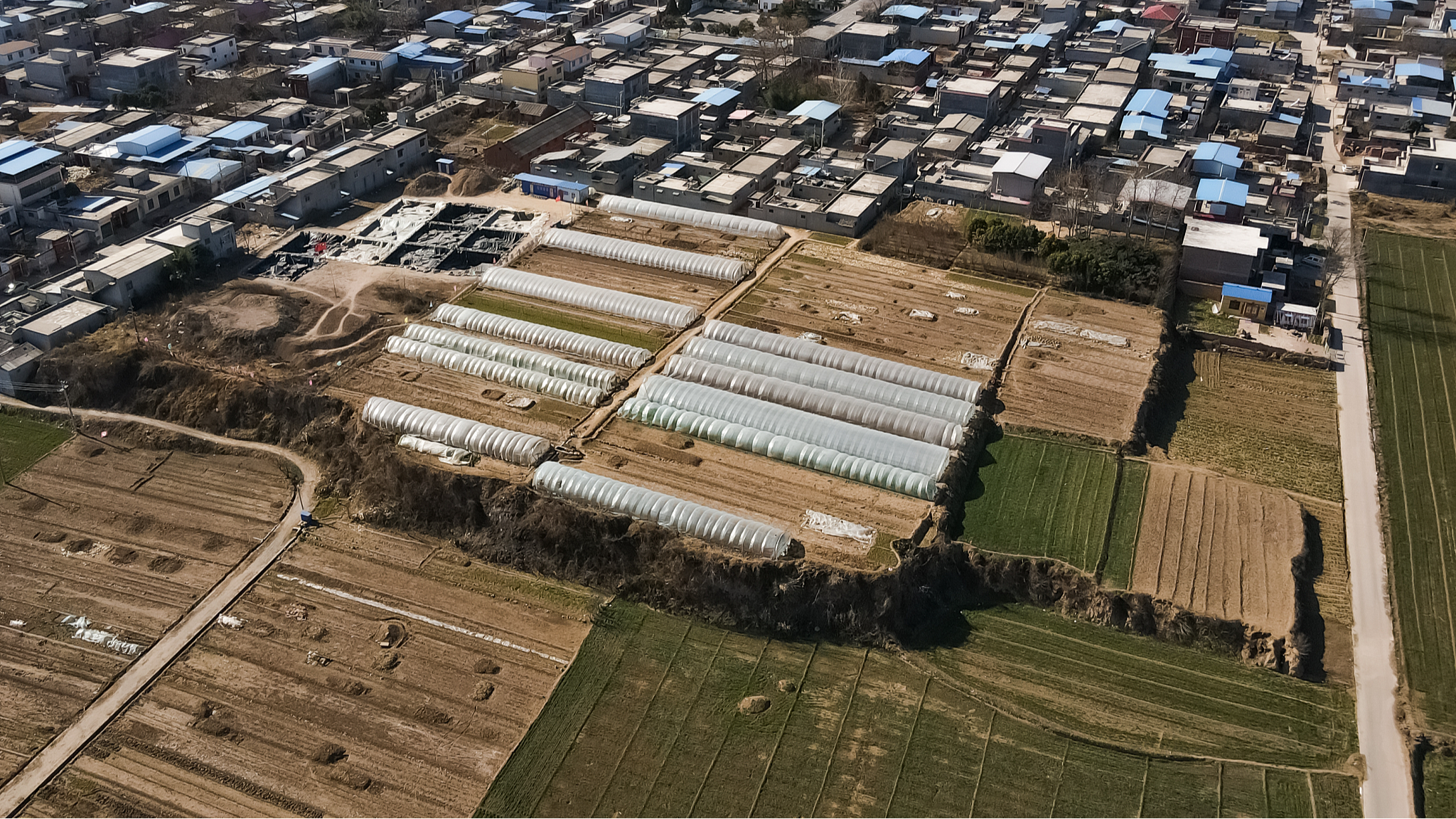
Aerial view of the Wadian site in Yuzhou City, central China's Henan Province, January 27, 2023. /CFP
Aerial view of the Wadian site in Yuzhou City, central China's Henan Province, January 27, 2023. /CFP
The latest archaeological research results from the Wadian site in Yuzhou City, central China's Henan Province, were presented at the 2022 Xia Culture Forum on June 25, giving insight into the rituals observed during the early Xia Dynasty (2070 BC-1600 BC).
Researchers say that the use of large ritual buildings at the Wadian site dates back to around 2000 BC, a critical period in the formation and development of the early state. The findings indicate that in the early Xia Dynasty, the capital city Wadian was probably one of the political, cultural and economic centers in the region around Songshan Mountain.
A large, rammed earth building site discovered is located on the northwestern terrace of the Wadian site. It stretches about 31 meters from north to south and 26 meters from east to west, with a zigzag plan and an area of about 800 square meters.
The archaeologists also found rich remains at the base of the building as well as several conch and mussel deposits, which are likely to have been collected in the fall and maybe are the remnants of one or more feasts, which are likely to have been associated with ritual activities.
Discovered in 1979, Wadian site covers around 1 square kilometer. The research on its settlement formation is part of the Chinese Civilization Exploration Project.


